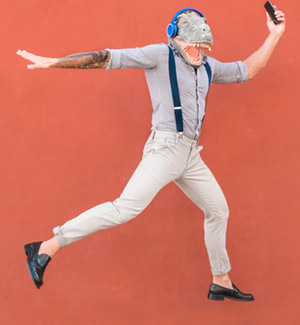 Writings on the grotesque seldom discuss dance. Yet, during the 1700s, Italian dancers trained in a “grotesque” style were in demand all over Europe. These grotteschi combined French ballet technique with a vigorous athleticism and pantomimic skills to portray comic and “foreign/non-European” characters. This historical precedent provides a clue to the creative uses of the grotesque.
Writings on the grotesque seldom discuss dance. Yet, during the 1700s, Italian dancers trained in a “grotesque” style were in demand all over Europe. These grotteschi combined French ballet technique with a vigorous athleticism and pantomimic skills to portray comic and “foreign/non-European” characters. This historical precedent provides a clue to the creative uses of the grotesque.
The grotesque, above all, represents the Other. The Other may simply be someone of another nation, race, or creed. Or, within a given situation, the grotesque may depict “Otherness” by transgressing social norms. This transgression can invert the hierarchies of low and high, folk culture and canonical art, vulgarity and refinement.
According to Edwards and Graulund, the grotesque “functions according to its audience expectations in time and place; its effects of discomfort, discomposure, and uneasiness are reliant on the historical standards of ‘normalcy’ and what is ‘proper.’” Utilized as a form of social critique, the grotesque can elicit recognition of “broader varieties of being and expression.”
So what would a contemporary expression of the grotesque in dance resemble? Join us as we not only embody but also transgress the elements of movement harmony. Register now for the December 7th and 8th Red Thread workshops, Movement Harmony ALIVE.
